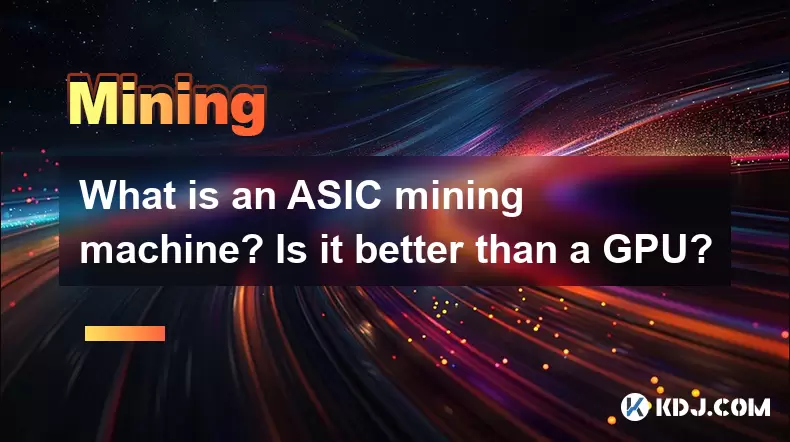-
 Bitcoin
Bitcoin $115500
-2.55% -
 Ethereum
Ethereum $3683
-4.76% -
 XRP
XRP $2.987
-4.87% -
 Tether USDt
Tether USDt $1.000
0.02% -
 BNB
BNB $780.2
-2.56% -
 Solana
Solana $169.9
-5.98% -
 USDC
USDC $0.9999
0.00% -
 Dogecoin
Dogecoin $0.2076
-7.07% -
 TRON
TRON $0.3270
-0.01% -
 Cardano
Cardano $0.7295
-6.68% -
 Hyperliquid
Hyperliquid $40.79
-5.25% -
 Sui
Sui $3.586
-6.89% -
 Stellar
Stellar $0.3949
-6.84% -
 Chainlink
Chainlink $16.75
-7.23% -
 Bitcoin Cash
Bitcoin Cash $568.5
-2.54% -
 Hedera
Hedera $0.2506
-8.16% -
 Avalanche
Avalanche $22.20
-6.84% -
 Ethena USDe
Ethena USDe $1.001
-0.03% -
 Toncoin
Toncoin $3.483
1.28% -
 UNUS SED LEO
UNUS SED LEO $8.932
-0.25% -
 Litecoin
Litecoin $106.0
-4.24% -
 Shiba Inu
Shiba Inu $0.00001237
-5.42% -
 Uniswap
Uniswap $9.357
-7.94% -
 Polkadot
Polkadot $3.667
-5.41% -
 Monero
Monero $307.9
-2.48% -
 Dai
Dai $0.9999
-0.02% -
 Bitget Token
Bitget Token $4.403
-3.06% -
 Cronos
Cronos $0.1393
-5.83% -
 Pepe
Pepe $0.00001067
-7.69% -
 Aave
Aave $259.9
-6.88%
What is an ASIC mining machine? Is it better than a GPU?
ASIC miners, designed for specific cryptocurrencies, offer superior hash rates and efficiency but are less versatile and more costly than GPUs.
May 15, 2025 at 06:35 pm

An ASIC mining machine, or Application-Specific Integrated Circuit mining machine, is a specialized piece of hardware designed specifically for the purpose of mining cryptocurrencies. Unlike general-purpose computing devices like CPUs and GPUs, ASICs are engineered to perform only one task: to solve the cryptographic puzzles required to validate transactions and add them to the blockchain. This specialization allows ASICs to be significantly more efficient and powerful at mining specific cryptocurrencies compared to other types of hardware.
How ASIC Mining Machines Work
ASIC mining machines operate by executing the cryptographic hash functions necessary for mining at a much higher speed than general-purpose processors. The core of an ASIC is its integrated circuit, which is custom-designed to perform the SHA-256 algorithm for Bitcoin mining or other algorithms for different cryptocurrencies. When a mining machine is powered on, it begins to process transactions from the blockchain, attempting to find a hash that meets the network's difficulty target. If successful, the miner is rewarded with newly minted cryptocurrency and transaction fees.
Advantages of ASIC Mining Machines
One of the primary advantages of ASIC mining machines is their superior hash rate. For example, a high-end ASIC miner can achieve hash rates in the range of terahashes per second (TH/s), far surpassing the capabilities of even the most powerful GPUs. This high hash rate translates to a higher probability of solving the cryptographic puzzle and earning mining rewards. Additionally, ASICs are more energy-efficient per hash compared to GPUs, which can lead to lower operational costs over time.
Disadvantages of ASIC Mining Machines
Despite their efficiency, ASIC mining machines have several drawbacks. They are typically more expensive to purchase upfront, which can be a barrier for individual miners. ASICs are also less versatile than GPUs, as they can only mine the cryptocurrency for which they were designed. This lack of flexibility can be a significant disadvantage if the market for a particular cryptocurrency declines. Moreover, the rapid pace of technological advancement in ASIC design means that newer models can quickly render older ones obsolete, leading to a shorter lifespan for the hardware.
Comparing ASICs to GPUs
When comparing ASIC mining machines to GPUs, several factors come into play. ASICs are generally more powerful and efficient for mining specific cryptocurrencies, making them the preferred choice for miners focused on maximizing their hash rate and minimizing energy costs. However, GPUs offer greater versatility, as they can be used for mining a variety of cryptocurrencies and can also be repurposed for other computing tasks when not mining. This flexibility can be advantageous for miners who want to switch between different cryptocurrencies or use their hardware for other purposes.
Is an ASIC Better Than a GPU?
Determining whether an ASIC is better than a GPU depends on the miner's specific goals and circumstances. For miners focused on mining a single cryptocurrency like Bitcoin, ASICs are the superior choice due to their unmatched efficiency and hash rate. However, for miners interested in mining multiple cryptocurrencies or those who value flexibility, GPUs may be a better option. Additionally, the initial cost of an ASIC can be prohibitive for some miners, while GPUs are more accessible and can be used for other computing tasks, making them a more practical choice for those with limited budgets or diverse computing needs.
Factors to Consider When Choosing Between ASICs and GPUs
When deciding between ASIC mining machines and GPUs, several factors should be considered. The first is the specific cryptocurrency being mined, as ASICs are designed for particular algorithms and may not be compatible with all cryptocurrencies. The second factor is the miner's budget, as ASICs typically have a higher upfront cost but may offer better long-term returns due to their efficiency. The third consideration is the miner's long-term goals, as those looking to mine multiple cryptocurrencies or use their hardware for other purposes may prefer the versatility of GPUs. Finally, the miner should consider the potential for technological obsolescence, as ASICs can become outdated more quickly than GPUs.
Practical Example: Setting Up an ASIC Mining Machine
Setting up an ASIC mining machine involves several steps to ensure it operates efficiently and securely. Here is a detailed guide on how to set up an ASIC miner:
Choose the Right ASIC Miner: Select an ASIC miner that is compatible with the cryptocurrency you want to mine. Research the hash rate, power consumption, and cost to ensure it meets your needs.
Prepare the Mining Environment: Ensure you have a suitable location for your ASIC miner. It should be well-ventilated and have access to a stable power supply. Consider the noise level, as ASIC miners can be loud.
Connect the Hardware: Connect the ASIC miner to a power source using the provided power supply unit. Ensure all connections are secure and follow the manufacturer's instructions.
Configure the Mining Software: Download and install the mining software recommended by the ASIC manufacturer. Configure the software with your mining pool details, including the pool URL, username, and password.
Join a Mining Pool: Most miners join a mining pool to increase their chances of earning rewards. Choose a reputable mining pool and follow their instructions for setting up your ASIC miner.
Monitor and Maintain: Regularly monitor the performance of your ASIC miner using the mining software. Keep the hardware clean and ensure it is operating within safe temperature ranges. Update the firmware as needed to maintain optimal performance.
Practical Example: Setting Up a GPU for Mining
Setting up a GPU for mining involves different steps compared to an ASIC miner. Here is a detailed guide on how to set up a GPU for cryptocurrency mining:
Choose the Right GPU: Select a GPU that is suitable for mining the cryptocurrency you are interested in. Consider factors such as hash rate, power consumption, and cost.
Prepare the Mining Rig: Assemble a mining rig with a motherboard, CPU, RAM, and power supply that can support multiple GPUs. Ensure the rig is well-ventilated and has a stable power supply.
Install the GPU: Install the GPU into the mining rig, ensuring it is securely connected to the motherboard and power supply. Follow the manufacturer's instructions for proper installation.
Install the Mining Software: Download and install mining software compatible with your GPU and the cryptocurrency you want to mine. Popular options include NiceHash, T-Rex, and GMiner.
Configure the Mining Software: Configure the mining software with your mining pool details, including the pool URL, username, and password. Adjust any settings related to the GPU's performance and power consumption.
Join a Mining Pool: Join a mining pool to increase your chances of earning rewards. Choose a reputable pool and follow their instructions for setting up your GPU.
Monitor and Maintain: Regularly monitor the performance of your GPU using the mining software. Keep the hardware clean and ensure it is operating within safe temperature ranges. Update the drivers and software as needed to maintain optimal performance.
Frequently Asked Questions
Q: Can ASIC miners be used for mining multiple cryptocurrencies?
A: Generally, ASIC miners are designed to mine specific cryptocurrencies and cannot be easily repurposed for other cryptocurrencies. For example, a Bitcoin ASIC miner cannot be used to mine Ethereum, as they use different mining algorithms. If you want to mine multiple cryptocurrencies, GPUs are a more versatile option.
Q: How long does an ASIC mining machine typically last?
A: The lifespan of an ASIC mining machine can vary depending on factors such as usage, maintenance, and technological advancements. On average, an ASIC miner can last between 1 to 3 years before becoming less profitable due to increased difficulty and newer, more efficient models entering the market.
Q: Are there any environmental concerns associated with ASIC mining?
A: Yes, ASIC mining can have significant environmental impacts due to its high energy consumption. The electricity used to power ASIC miners contributes to carbon emissions, especially if the energy source is not renewable. Miners are increasingly looking to use renewable energy sources to mitigate these environmental concerns.
Q: Can I mine cryptocurrencies profitably with a GPU in 2023?
A: Profitability with a GPU depends on several factors, including the cryptocurrency being mined, the cost of electricity, and the current market conditions. While GPUs are less efficient than ASICs for certain cryptocurrencies like Bitcoin, they can still be profitable for mining other cryptocurrencies, especially those that are ASIC-resistant. Always calculate your potential profits and costs before starting to mine with a GPU.
Disclaimer:info@kdj.com
The information provided is not trading advice. kdj.com does not assume any responsibility for any investments made based on the information provided in this article. Cryptocurrencies are highly volatile and it is highly recommended that you invest with caution after thorough research!
If you believe that the content used on this website infringes your copyright, please contact us immediately (info@kdj.com) and we will delete it promptly.
- Rarible Integrates Somnia Blockchain: A New Era for NFT Gaming?
- 2025-08-01 12:30:11
- JPMorgan, Coinbase, and Crypto Mainstream: A New York Minute on the Future of Finance
- 2025-08-01 12:30:11
- Altcoin Season in Full Swing: Market Shift and Key Metrics to Watch
- 2025-08-01 12:50:12
- Ripple, XRP, and RLUSD: Navigating Growth and Innovation
- 2025-08-01 08:30:37
- Tether's Triumph: Profits, US Initiatives, and Stablecoin Supremacy
- 2025-08-01 09:11:00
- Ethereum, ZK-VMs, and Quantum Resistance: A New Era for Blockchain Security?
- 2025-08-01 09:30:12
Related knowledge

What was the highest APY for IRON mining?
Jul 23,2025 at 05:14am
Understanding IRON Token and Its Mining MechanismThe IRON token is a stablecoin that operates within the Iron Finance ecosystem, primarily on blockcha...

What is impermanent loss in IRON pools?
Jul 23,2025 at 09:00am
Understanding Impermanent Loss in the Context of IRON PoolsImpermanent loss is a phenomenon that affects liquidity providers in decentralized finance ...

How to claim rewards from IRON mining?
Jul 23,2025 at 02:21pm
Understanding IRON Mining and Reward MechanismsIRON Finance operated as a decentralized finance (DeFi) protocol on the Polygon and Binance Smart Chain...

How to claim rewards from IRON mining?
Jul 29,2025 at 05:07am
Understanding IRON Mining and Reward MechanismIRON is a dual-token system designed to stabilize the value of a synthetic asset through a combination o...

IRON mining tutorial for beginners
Jul 27,2025 at 12:01am
What Is IRON and How Does It Work in the Cryptocurrency Ecosystem?IRON is a cryptocurrency token that operates on the Binance Smart Chain (BSC) and is...

How to calculate APY for IRON mining?
Jul 28,2025 at 09:49am
Understanding APY in the Context of IRON Token MiningWhen engaging in IRON token mining within decentralized finance (DeFi) platforms, Annual Percenta...

What was the highest APY for IRON mining?
Jul 23,2025 at 05:14am
Understanding IRON Token and Its Mining MechanismThe IRON token is a stablecoin that operates within the Iron Finance ecosystem, primarily on blockcha...

What is impermanent loss in IRON pools?
Jul 23,2025 at 09:00am
Understanding Impermanent Loss in the Context of IRON PoolsImpermanent loss is a phenomenon that affects liquidity providers in decentralized finance ...

How to claim rewards from IRON mining?
Jul 23,2025 at 02:21pm
Understanding IRON Mining and Reward MechanismsIRON Finance operated as a decentralized finance (DeFi) protocol on the Polygon and Binance Smart Chain...

How to claim rewards from IRON mining?
Jul 29,2025 at 05:07am
Understanding IRON Mining and Reward MechanismIRON is a dual-token system designed to stabilize the value of a synthetic asset through a combination o...

IRON mining tutorial for beginners
Jul 27,2025 at 12:01am
What Is IRON and How Does It Work in the Cryptocurrency Ecosystem?IRON is a cryptocurrency token that operates on the Binance Smart Chain (BSC) and is...

How to calculate APY for IRON mining?
Jul 28,2025 at 09:49am
Understanding APY in the Context of IRON Token MiningWhen engaging in IRON token mining within decentralized finance (DeFi) platforms, Annual Percenta...
See all articles

























































































